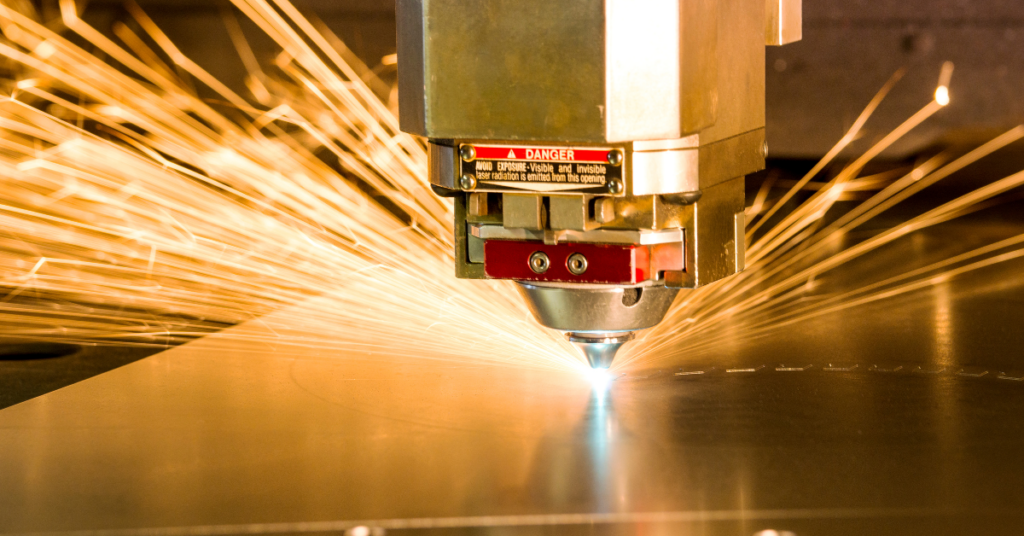
Every metal fabrication shop uses cutting to shape simple sheets of steel, aluminum, zinc, copper, and other materials into more complex, customized shapes and sizes. Methods include shearing, rotary cutting, water jet, and plasma cutting. The most advanced method with the most advantages, however, is laser cutting.
This process uses a concentrated beam to produce the high-temperature-gradient heating of focused target on a sheet of metal, triggering rapid melting and vaporization. The hot spot created is then blasted with gas to get rid of any vaporized or melted material. This allows the super-heated spot to travel quickly and precisely down through the thickness of the material.
Laser cutting brings many advantages to the metal fabrication environment, all of which have minimal impact on the environment! Let’s take a closer look:
1. Versatility
A laser cutting machine has a mechanism that enables it to cut a vast array of custom designs and shapes out of many different materials of various thicknesses. This makes it one of the most valuable and versatile tools in the metal fabrication shop.
2. Precision
Compared to other cutting methods, laser-driven machines produce cuts with a much smaller margin of error—as low as +/-0.1 mm. This pinpoint accuracy frequently eliminates the need for for added tolerances as well as secondary services.
3. Flexibility
Because they do not require tooling, sharpening between processes, or an exchange of tools to achieve separate cuts, laser cutting machines can achieve detailed cuts without costly downtime even throughout long production runs.
4. Consistency
Laser cuts create results that are not only accurate, but 100% reproduceable. This allows manufacturers to consistently and reliably produce multiple copies of the same product.
5. Speed
Even on materials as thick as 10 mm, laser cutting produces intricate cuts significantly faster than flame, plasma, and other types of cutting methods without sacrificing accuracy.
6. Automation
Although laser cutting machines require skilled operators to ensure safety, most of them are compatible with CNC, CAD/CAM programs, feeding machines, and follow-up conveyors. This reduces the need for manual labor throughout the process.
7. Contactless Cutting
A laser cutting machine operates with less friction and force than traditional, mechanical methods. Because only the targeted beam comes in contact with the material, there is less tearing, warping, and distortion.
8. Reduced Finishing
Laser cutting machines rarely leave behind surface imperfections or rough edges. Their smaller heated zone (HAZ) reduces the risk of internal flaws as well, producing metal parts to specifications from the first product to the last.
9. Energy Efficiency
Compared to the 50kW power average per session of mechanical methods, laser cutting machines typically use 10kW—a significant saving.
If your manufacturing business isn’t working with a metal fabrication shop with laser cutting capabilities, why not reach out to EDCO? We’ll help you create top-quality metal products for whatever applications you need. We’ll analyze your needs and let you know how the benefits of laser cutting can help your business. Manufacture products faster, more accurately, and with minimal environmental impact at what might prove to be a substantial savings.
